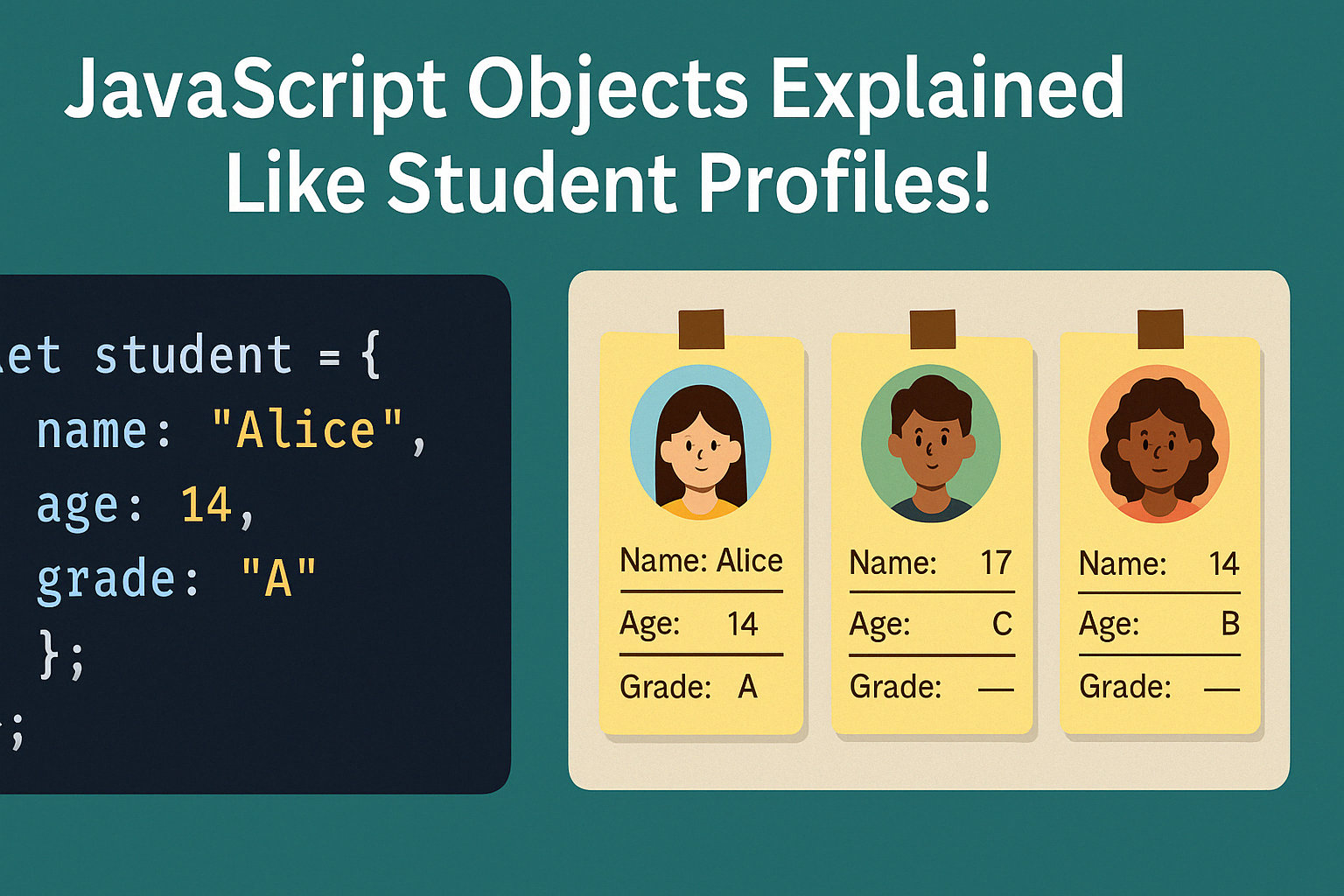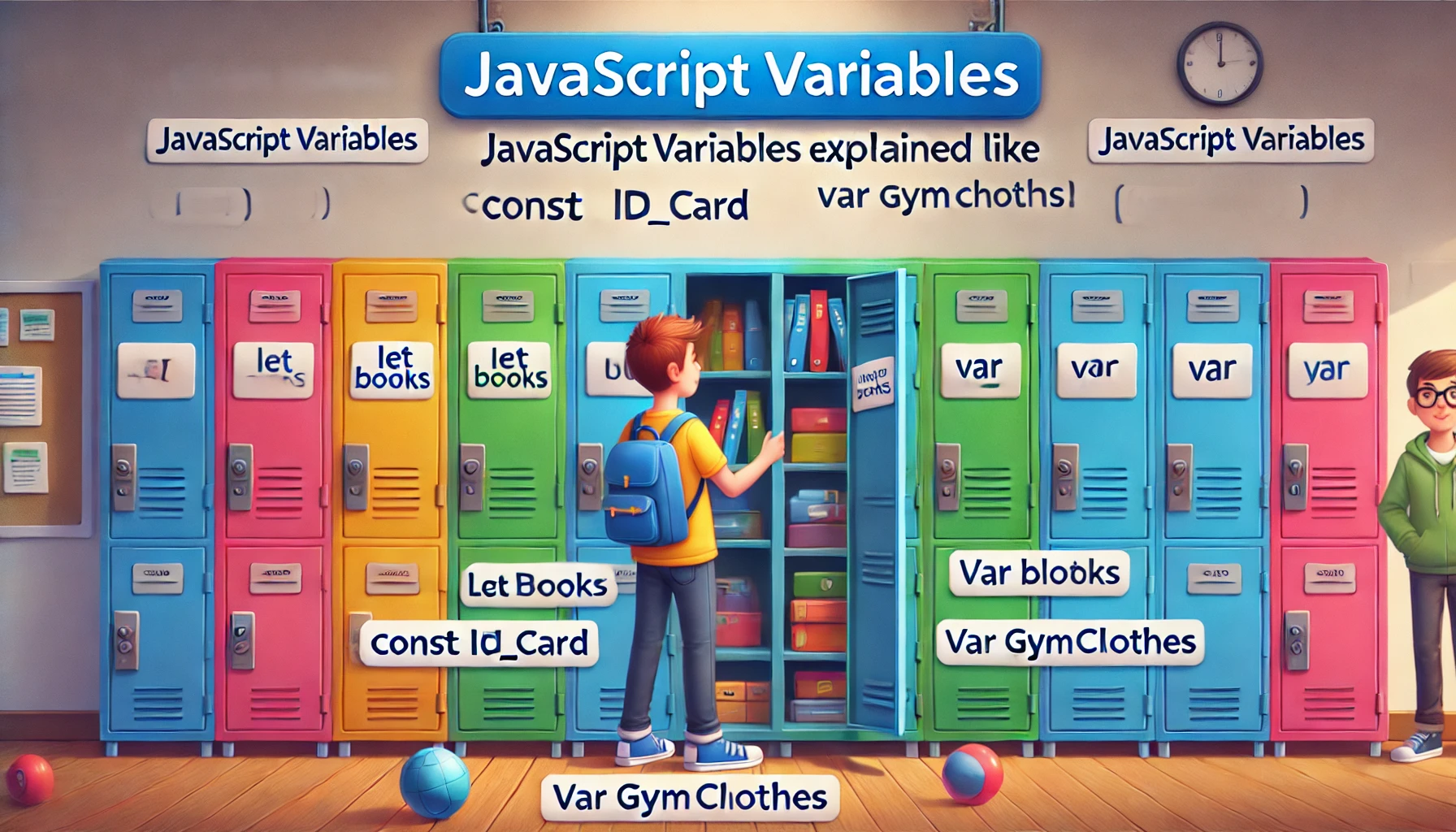Introduction
Imagine each student in a classroom not only has a seat (like in an array) but also a full profile: name, age, grade, subjects, and more. That’s exactly how JavaScript objects work. Instead of just storing values in numbered positions, objects store data in key-value pairs—like labeled folders in a student’s file.
In this guide, we’ll explore JavaScript objects using the classroom profile analogy. You’ll see how to create, access, update, and use objects in ways that feel as natural as filling out a student form.
Objects = Student Profiles
While arrays are like rows of seats, objects are like folders that contain detailed profiles. Each profile includes labeled fields like name, age, and subjects.
let student = {
name: "Alice",
age: 14,
grade: "9th",
subjects: ["Math", "Science", "English"]
};
console.log(student.name); // Alice
console.log(student.subjects[1]); // Science
📌 Key Takeaway: Objects use named keys instead of numbered indexes to organize and access data.
Updating a Student Profile
You can update any part of a student’s profile using dot or bracket notation.
student.age = 15;
student["grade"] = "10th";
console.log(student);
You can also add new fields like attendance or parent contact info.
student.attendance = 92;
student["parent"] = "Mrs. Smith";
Adding and Removing Fields
Adding fields is as easy as assigning a new key-value pair. To remove a property:
delete student.parent;
console.log(student);
📌 Tip: Use delete to remove fields that are no longer needed.
Looping Through Profiles
Want to see everything in a profile? Use a for...in loop:
for (let key in student) {
console.log(`${key}: ${student[key]}`);
}
This is like going through every section in a student’s file folder.
Nested Objects = Student Within Departments
Objects can contain other objects. Imagine a department profile inside a student profile:
let student = {
name: "Alice",
academic: {
GPA: 3.8,
advisor: "Mr. Reed"
}
};
console.log(student.academic.GPA); // 3.8
📌 Tip: Use nested objects to structure complex data like addresses, academic records, or preferences.
Array of Objects = Full Class List
Now imagine a list of student profiles—this is an array of objects.
let classroom = [
{ name: "Alice", age: 14 },
{ name: "Bob", age: 15 },
{ name: "Charlie", age: 14 }
];
classroom.forEach(student => {
console.log(`${student.name} is ${student.age} years old.`);
});
This is perfect for managing rosters, team members, or any structured group.
Checking for Fields
You can check if a field exists using in:
console.log("age" in student); // true
console.log("grade" in student); // true
Or verify if it’s undefined:
if (student.hobby === undefined) {
console.log("No hobby listed.");
}
Common Use Cases for Objects
✅ User profiles in apps
✅ Product details in online stores
✅ API responses
✅ Configurations or settings
✅ Game character stats
Real-Life Project Ideas Using Objects
- Build a student profile app
- Create a product catalog
- Store form submissions from users
- Design a quiz tracker for right/wrong answers
Conclusion: Think Like a Teacher, Code Like a Developer
Just as a teacher uses student profiles to understand each learner, JavaScript objects help you structure and manage detailed data with clarity. Whether it’s a single student or an entire class, objects give your code meaning, structure, and flexibility.
✅ Use key-value pairs to organize data
✅ Update, remove, or loop through fields easily
✅ Nest objects or combine them into arrays for complex systems
📌 With this student profile analogy, objects become second nature—and coding becomes more human.
🎓 Up Next: JavaScript Conditions Explained Like School Rules!



